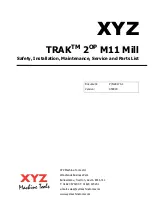
158
receiving port to the voice VLAN, issues ACL rules, and configures the packet precedence. You can
configure a voice VLAN aging time on the device. The system will remove a port from the voice VLAN if
no packet is received from the port during the aging time. The system automatically assigns ports to, or
removes ports from, a voice VLAN. When the voice VLAN works correctly, when the system reboots, the
system reassigns ports in automatic voice VLAN assignment mode to the voice VLAN after the reboot,
ensuring that existing voice connections can work correctly. In this case, voice traffic streams do not
trigger port assignment to the voice VLAN.
Manual mode
Manual mode is suitable for scenarios where only IP phones access the network through the device and
ports on the device transmit only voice traffic, as shown in
. In this mode, ports assigned to a
voice VLAN transmit voice traffic exclusively, which prevents the impact of data traffic on the transmission
of voice traffic.
You must manually assign an IP phone accessing port to a voice VLAN. Then, the system matches the
source MAC addresses carried in the packets against the device’s OUI addresses. If the system finds a
match, it issues ACL rules and configures the packet precedence. In this mode, you must manually assign
ports to, or remove ports from, a voice VLAN.
Cooperation of voice VLAN assignment modes and IP phones
Both modes forward tagged packets sent out of IP phones according to their tags. Some IP phones can
send out VLAN-tagged packets, and some IP phones can send out only untagged packets.
and
list the configurations required for ports of different link types to support tagged or
untagged voice traffic sent from IP phones when different voice VLAN assignment modes are configured.
When IP phones send untagged voice traffic, you can only configure the voice traffic receiving ports on
the device to operate in manual voice VLAN assignment mode.
Table 16
Required configurations on ports of different link types for them to support tagged voice traffic
Port link
type
Voice VLAN
assignment mode
Support for tagged
voice traffic
Configuration requirements
Access
Automatic
No N/A
Manual
Trunk
Automatic
Yes
The PVID of the port cannot be the voice VLAN.
Manual
The PVID of the port cannot be the voice VLAN.
Configure the port to permit packets of the voice
VLAN to pass through.
Hybrid
Automatic
Yes
The PVID of the port cannot be the voice VLAN.
Manual
The PVID of the port cannot be the voice VLAN.
Configure the port to permit packets of the voice
VLAN to pass through tagged.
Table 17
Required configurations on ports of different link types for them to support tagged voice traffic
Port link
type
Voice VLAN
assignment mode
Support for untagged
voice traffic
Configuration requirements
Access
Automatic No
N/A
Manual
Yes
Configure the PVID of the port as the voice VLAN.
Trunk Automatic
No
N/A
















































